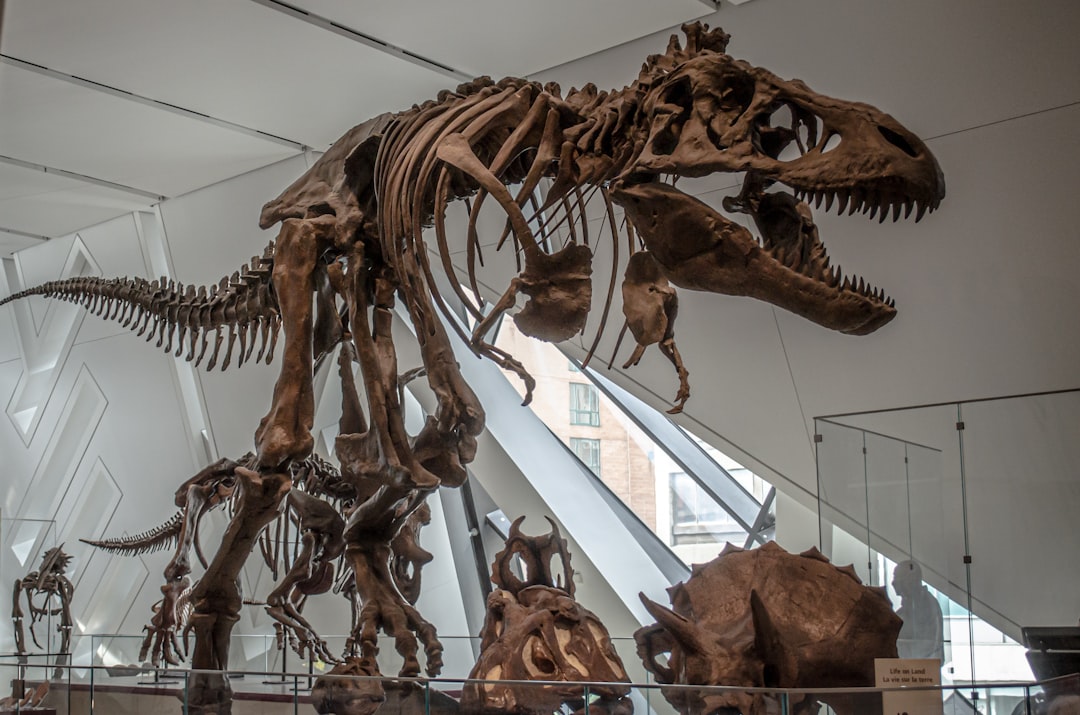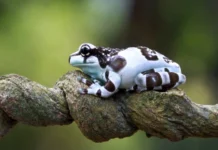When we think of dinosaurs, we often imagine large, fearsome creatures with sharp teeth. But did you know that there was a dinosaur with 500 teeth? Yes, you read that right – 500 teeth! In this article, we’ll explore the anatomy of this unique dinosaur and learn more about its incredible teeth.
The Anatomy of a Dinosaur with 500 Teeth
Before we dive into the dinosaur with 500 teeth, let’s first understand the anatomy of a dinosaur. Dinosaurs were a diverse group of reptiles that lived on Earth millions of years ago. They were characterized by their large size, long tails, and upright posture.
Dinosaurs had a variety of body shapes and sizes, ranging from the tiny Compsognathus to the massive Argentinosaurus. They also had different types of teeth, depending on their diet. Some dinosaurs had sharp, pointed teeth for tearing meat, while others had flat, grinding teeth for eating plants.
The Dinosaur with 500 Teeth

The dinosaur with 500 teeth is known as Nigersaurus, and it lived during the Late Cretaceous period, around 115 to 105 million years ago. It was a herbivorous dinosaur, meaning it only ate plants. Nigersaurus was discovered in the Sahara Desert in Niger, Africa, in 1976 by a team of paleontologists.
Nigersaurus was a relatively small dinosaur, measuring only 30 feet long and weighing around 4 tons. It had a long neck and a small head, with a mouth full of tiny, peg-like teeth. These teeth were arranged in rows, with up to 50 teeth in each row. In total, Nigersaurus had around 500 teeth in its mouth.
The Function of Nigersaurus’ Teeth
You may be wondering why Nigersaurus needed 500 teeth. The answer lies in its diet. Nigersaurus was a browser, meaning it ate low-lying plants, such as ferns and cycads. To efficiently consume these plants, Nigersaurus needed a constant supply of teeth to replace the ones that wore down from chewing.
Unlike other dinosaurs, Nigersaurus did not have a beak or a hard palate, which are common features in herbivorous dinosaurs. Instead, it had a wide, flat mouth with a large number of teeth. This unique mouth structure allowed Nigersaurus to crop plants close to the ground, similar to how modern-day cows graze.
The Unique Structure of Nigersaurus’ Teeth

Nigersaurus’ teeth were unlike any other dinosaur’s teeth. They were small, thin, and pointed, with a slight curve. They were also tightly packed together, with no gaps between them. This unique structure allowed Nigersaurus to crop plants close to the ground without losing any food.
The teeth were also constantly growing, similar to how our fingernails grow. This ensured that Nigersaurus always had a fresh supply of teeth to replace the ones that wore down. The teeth were also replaced in a conveyor belt-like fashion, with new teeth growing at the back of the mouth and pushing the older teeth forward.
Other Unique Features of Nigersaurus
Aside from its 500 teeth, Nigersaurus had other unique features that set it apart from other dinosaurs. Its neck was incredibly flexible, with 14 vertebrae that allowed it to bend and twist in various directions. This flexibility was necessary for Nigersaurus to reach low-lying plants without having to move its entire body.
Nigersaurus also had a wide, flat skull with large nostrils and a small brain. Its eyes were positioned on the sides of its head, giving it a wide field of vision. This was important for detecting predators, as Nigersaurus was a small and vulnerable dinosaur.
Conclusion
In conclusion, Nigersaurus was a unique dinosaur with 500 teeth. Its teeth were constantly growing and replaced in a conveyor belt-like fashion, allowing it to efficiently consume low-lying plants. Its flexible neck and wide, flat skull were also unique features that helped it survive in its environment.
The discovery of Nigersaurus sheds light on the diverse and fascinating world of dinosaurs. It also shows us that there is still much to learn about these ancient creatures and their incredible adaptations.
FAQs:
Q: What is a dinosaur with 500 teeth?
A: A dinosaur with 500 teeth is known as Nigersaurus. It was a herbivorous dinosaur that lived during the Late Cretaceous period, around 115 to 105 million years ago. Nigersaurus had a mouth full of tiny, peg-like teeth that were arranged in rows, with up to 50 teeth in each row. In total, it had around 500 teeth in its mouth.
Q: Why did Nigersaurus have 500 teeth?
A: Nigersaurus needed 500 teeth because of its diet. It was a browser, meaning it ate low-lying plants such as ferns and cycads. To efficiently consume these plants, Nigersaurus required a constant supply of teeth to replace the ones that wore down from chewing. Its unique mouth structure and constantly growing teeth allowed it to crop plants close to the ground, similar to how modern-day cows graze.
Q: How did Nigersaurus’ teeth function?
A: Nigersaurus’ teeth were small, thin, pointed, and tightly packed together, with no gaps between them. This unique tooth structure allowed Nigersaurus to crop plants close to the ground without losing any food. The teeth were constantly growing, ensuring that Nigersaurus always had a fresh supply of teeth to replace the ones that wore down. The teeth were also replaced in a conveyor belt-like fashion, with new teeth growing at the back of the mouth and pushing the older teeth forward.
Q: What are some other unique features of Nigersaurus?
A: Apart from its 500 teeth, Nigersaurus had a flexible neck with 14 vertebrae, allowing it to bend and twist in various directions. This flexibility helped Nigersaurus reach low-lying plants without having to move its entire body. It also had a wide, flat skull with large nostrils and a small brain. Its eyes were positioned on the sides of its head, giving it a wide field of vision to detect predators.
Q: What does the discovery of Nigersaurus teach us about dinosaurs?
A: The discovery of Nigersaurus provides valuable insights into the diverse world of dinosaurs and their incredible adaptations. It highlights the remarkable diversity in dinosaur anatomy, illustrating the wide range of specialized features and diets among different species. Additionally, the study of Nigersaurus sheds light on the complex evolutionary traits and survival strategies exhibited by ancient reptiles in their environments.
For more information, visit ApzoMedia



































































